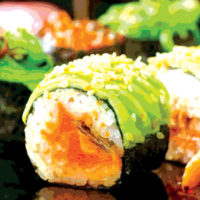Traceback Litigation: Epidemiological Point/Counter-Point

Traceback litigation usually follows one of two events—a recall or consumer-launched lawsuit. In the first scenario, reports of illness surface, insurers are placed on notice and a recall is issued. Then the phone rings. It’s upper management. They want to know how the contamination occurred, and, if it’s not the company’s fault, whose fault is it and can the company get their money back (that’s likely the PG version). In the second scenario, a consumer-launched lawsuit alleges the company’s food product caused injury. In both situations, the litigation involves a hunt for the source of contamination, which in turn involves the interplay of epidemiology (and other disciplines) and the law.
In the courtroom “epidemiology is the field of public health and medicine that studies the incidence, distribution, and etiology of disease in human populations.”[1] In order to pass legal muster, courts look to whether “a Bradford Hill analysis [wa]s applied by epidemiologists to determine whether a causal relationship exists between two (2) events.”[2] The question of causation becomes difficult in the courtroom because epidemiologists focus on populations.[3] There is a tension between the limits of epidemiology and the proof requirement in litigation.
As one court put it, “epidemiology can be used to prove general causation, but not specific causation.”[4]
We discuss below two interesting epidemiologic traceback cases. We summarize the point/counter-points by the parties, but let the readers guess the result of the cases (with answers appearing in the references). The cases present good examples of the interplay of legal standards of scientific methodology/foundation and epidemiologic opinions.
Post-Recall Traceback Litigation
Just like consumer products, manufacturers of food products rely on suppliers. To the retail seller, the food product is the manufacturer’s product. It follows, therefore, if there is a recall, retailers and other chain of distribution entities look upstream to the manufacturer. Recall costs can be quite large and it is only logical manufacturers look to recoup their recall-related costs from their suppliers.
Epidemiological traceback is complicated and much more so when there are multiple suppliers. Who was the source of the contamination? And what happens if the supplier vigorously litigates the issue and challenges the epidemiological traceback?
That is exactly what took place in American Home Insurance Company and Cargill Meat Solutions Corporation v. Greater Omaha Packing Company.[5] The genesis of the case was a multi-state outbreak of Escherichia coli-contaminated ground beef patties fabricated and sold by Cargill. Cargill was sued by a number of consumers, and, after the cases were settled, the company (and its insurer) sued a supplier in a cost recoupment lawsuit. Although Cargill used four different suppliers of beef trim (both domestic and foreign), the company sued only one supplier. That supplier disputed its beef trim was adulterated. The two sides then engaged in point/counter-point epidemiologic arguments.
Neither side disputed that the U.S. Centers for Disease Control and Prevention (CDC) tracked the outbreak to beef patties manufactured by Cargill on August 16, 2007. Based on a pulsed-field gel electrophoresis (PFGE) analysis, CDC created a line list of 54 people. Some patties were even tested and found to have the E. coli strain. Of the 54, 27 people reported exposure to the patties.
 The dispute centered upon the other 27 people. The supplier disputed Cargill’s experts’ traceback opinions and filed a Daubert motion to preclude Cargill’s experts from testifying. The supplier’s expert preclusion motion and Cargill’s response raised interesting point/counter-point epidemiologic issues.
The dispute centered upon the other 27 people. The supplier disputed Cargill’s experts’ traceback opinions and filed a Daubert motion to preclude Cargill’s experts from testifying. The supplier’s expert preclusion motion and Cargill’s response raised interesting point/counter-point epidemiologic issues.
Consumer-Launched Lawsuit Traceback Litigation
Consumer launched lawsuits allege food product was the cause of illness. That traditional claim sometimes raises interesting epidemiologic issues. An interesting epidemiologic traceback case is Foster v. Legal Sea Foods, Inc.[6]
In Foster, a husband and wife claimed they developed Hepatitis A virus (HAV) from consumption of undercooked steamed mussels. According to plaintiffs, their plate of steamed mussels included some unopened ones. Thirty-three days later, the husband became ill and was diagnosed with HAV. Three weeks later, the wife became ill and was diagnosed with HAV. Plaintiffs sued the restaurant and the mussel supplier.
 Plaintiffs’ experts opined the supplier’s mussels were contaminated with HAV and the restaurant’s negligent cooking did not “kill” the HAV. The restaurant and supplier filed a Daubert motion to preclude the plaintiffs’ experts.
Plaintiffs’ experts opined the supplier’s mussels were contaminated with HAV and the restaurant’s negligent cooking did not “kill” the HAV. The restaurant and supplier filed a Daubert motion to preclude the plaintiffs’ experts.
Who Prevailed in the Preclusion Motions?
The question to readers is how do they think the preclusion motions were decided? Did the court grant or deny the supplier’s motion in American Home Insurance Company? Did the court grant or deny the restaurant/supplier’s motion in Foster? A hint: One motion was granted and one was denied.[7]
In the case where the expert preclusion motion was denied, that case is headed to trial. A jury of ordinary people will decide if the epidemiologic traceback investigation was sound enough. Epidemiologists will meet the witness chair and it will be interesting to see what the jury decides.
Steven R. Kramer, Esq., is a partner in the national law firm of Eckert Seamans Cherin & Mellott, LLC.
References
1. Green, M.D. 2000. Reference guide on epidemiology. In: Reference manual on scientific evidence 333, 335. Fed Jud Ctr. 2d ed.
2. Mallozzi v. EcoSMART Technologies, Inc. __ F. Supp. 2d __, 2013 WL 2415677, at *4 (E.D.N.Y. May 31, 2013).
3. See e.g. Baldonado v. Wyeth, __ F. Supp. 2d __, 2012 WL 3779100 (N.D.Ill. Aug. 31, 2012).
4. Weils v. SmithKline Beecham Corp., __ F. Supp. 2d __, 2009 WL 564303, at *5 (W.D.Tex. Feb.18, 2009).
5. U.S. District Court for Nebraska, Docket No.: 8:11CV270.
6. __ F. Supp. 2d __, 2008 WL 2945561 (D.Md. July 25, 2008).
7. The court (i) denied the preclusion motion in American Home Insurance Company and (ii) granted the preclusion motion in Foster.
>
Looking for a reprint of this article?
From high-res PDFs to custom plaques, order your copy today!






